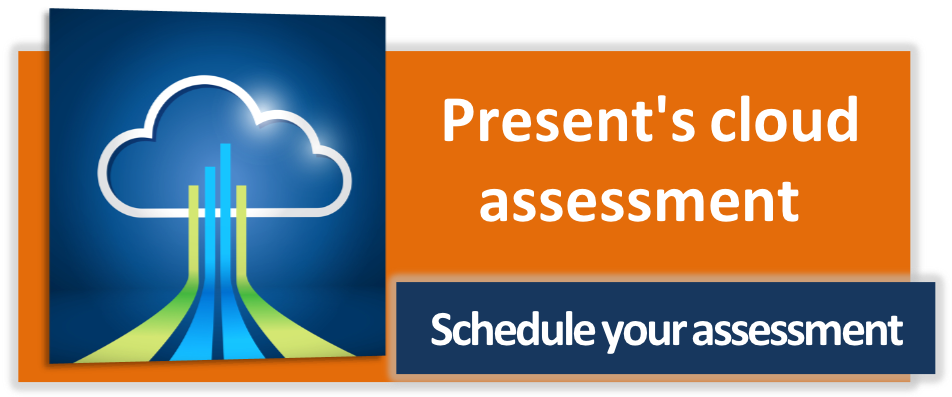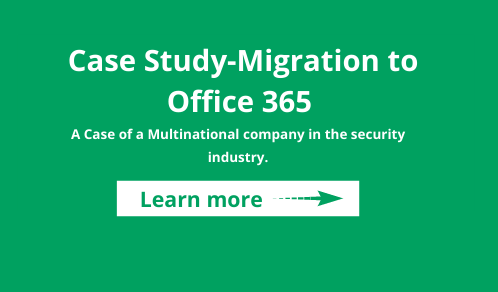Present Blog – IT Thought Leadership
Blog Present-IT thought leadership
Blog Present-IT thought leadership
IT thought leadership blog for CIOs and CTOs in Canada seeking resources to drive IT as a business contributor: hybrid cloud, infrastructure, managed services and security and IT recruitment.
 If you are among most small to medium-sized businesses, limited budgets and reduced IT staff can hinder your ability to create and manage an IT infrastructure that supports the growth of your business. Cloud computing can help you solve this problem, providing you with easy and affordable access to IT resources and services over the Internet.
If you are among most small to medium-sized businesses, limited budgets and reduced IT staff can hinder your ability to create and manage an IT infrastructure that supports the growth of your business. Cloud computing can help you solve this problem, providing you with easy and affordable access to IT resources and services over the Internet.
Cloud can effectively eliminate the need to procure and maintain application software or IT infrastructure. It is possible to acquire these features under a subscription pricing model. Office 365, Adobe Creative suites and QuickBooks Online are examples of popular cloud services for businesses.
According to recent studies on the topic, SMBs are increasingly adopting cloud services. The reason is simple: cloud services are easy to access, offer increased flexibility, and are designed using a tiered pricing model that does not require a large initial investment in hardware.
First Point: Defining the Cloud
Before deploying a cloud strategy, it is important to first understand what this technology means. Cloud computing is defined as a collection of IT resources, including virtual servers, compute, storage, networking, or network software, that is delivered over the Internet as a service.
There are three general service delivery families that support the cloud:
1- Software-as-a-Service (SaaS)
SaaS is web software that is purchased from a service provider and available as needed. SaaS includes a variety of services, from email to web-based inventory control, CRM, marketing automation, banking, project management tools, point-of-sale and meeting applications.
2- Infrastructure-as-a-Service (IaaS)
IaaS is web-based hardware that is purchased as a service on demand. IaaS includes servers, memory, CPUs, disk space, and network equipment. Most IaaS providers offer a highly accessible design model that provides extremely secure usable time.
3- Platform-as-a-Service (PaaS)
PaaS allows software developers to create new applications or improve existing ones, without incurring the costs of purchasing and managing the underlying infrastructure. Thus, we see that IT departments who prefer to customize their own solutions generally prefer PaaS.
There are also different types of cloud:
• Public cloud
Public clouds are operated by a cloud service provider, which provides computing resources, such as servers and storage, over the Internet. Microsoft Azure, AWS and GWS are examples of the public cloud. In a public cloud, the supplier manages the entire hardware platform. You access these services and manage your account through a web browser.
• Private Cloud
The private cloud is where all of the cloud resources are used exclusively by a business or organization. The latter can then offer cloud-type services to the various departments of its company.
• Hybrid Cloud
The hybrid cloud brings together public and private clouds, linked by a technology allowing them to share data and applications. By enabling data and applications to move from the private cloud to the public cloud, the hybrid cloud provides businesses with greater flexibility and more deployment options.
Second Point: Understanding How the Cloud Works
Cloud services all work slightly differently, depending on the provider. But most of them offer a user-friendly dashboard, accessible through a browser, that allows IT professionals and developers to control resources and manage their accounts.
When a need for additional resources arises, it’s then possible to consume the services as needed, whether temporary or permanent.
Third point: demystifying fears of the cloud
Fear of the Patriot Act
The most common fear is that of having their data exploited by the provider or another authority. Many web hosts are effectively under the jurisdiction of the United States. As a result, they are subject to the Patriot Act passed in September 2001, granting access to the US authorities to certain data from the cloud. What type of data is accessible by these authorities? It is data hosted by American companies located both on American soil and not, as well as data hosted by foreign companies, on American soil.
What you must realize it that the access granted to these organizations will never be for a questionable or commercial purpose. They will not request all of the data in permanence, but grant themselves the right to verify that of a client in question. The fact that it is hosted in the cloud makes no difference, as hosting the solution internally would not be an obstacle in this type of case for a government organization.
Fourth Point: Costs
On the infrastructure side, major players in the industry confirm that cloud computing is more expensive than acquiring infrastructure. That said, the acquisition costs do not take into account the costs related to the operation of its server room (space taken up by equipment, maintenance, electricity, labour, etc.).
On the application side (SAAS), application providers that previously sold licences that can be used in perpetuity now offer the option of operating by subscription. This is often criticized as a constant cost that at some point exceeds the price of a perpetual licence. However, these subscriptions include regular updates to the application, at no extra charge. The massive adoption of certain applications as a service (SAAS) is mainly related to the ease of operation. For example, companies that have switched to an email service (such as Online Exchange) do not have to operate the complex environment of an Exchange server.
Companies can therefore focus their activities on projects that can generate value, rather than having to manage environments with little added value.
In the end and like any business decision, migrating to a cloud computing model is an important decision. It requires careful analysis of your business goals, IT requirements and short- and long-term priorities. It also means determining the types of service level agreements you need, your regulatory compliance requirements, and your security needs.
For SMBs that decide to go to the cloud, you still have to determine when and how to make this move. Be careful not to under-invest when evaluating the options available and the service providers that best suit your needs.
For advice and assistance on your cloud decisions and implementation strategies, contact us directly.
About Blog
The right use of technology addresses business challenges and drives business growth in all areas of an enterprise. We hope this blog will offer insight into developing strategies and tactics to enable you to identify those key drivers of growth and keep pace with and anticipate the rapid technology change of today.
Posts by Topic
- IT infrastructure (116)
- IT security (92)
- IT Innovation (59)
- Trends (51)
- Cloud (47)
- Managed services (46)
- Mobility (38)
- Digital transformation (29)
- CIO/IT leaders (28)
- Events (28)
- News (23)
- Microsoft 365 (17)
- Security (17)
- IBM (16)
- Disaster recovery (DR) (14)
- High availability (12)
- Recruitment (12)
- Storage (12)
- Big Data (11)
- Collaboration (11)
- AI (9)
- Case study (9)
- Office 365 (9)
- BYOD (8)
- Customer Experience (8)
- Hybrid Cloud (7)
- Current events (6)
- SAP Hana (5)
- Business intelligence (BI) (4)
- Converged infrastructure (4)
- Convergence / Hyper-convergence (4)
- Virtualization (4)
- Copilot (3)
- Future of retail (2)
- Retail (2)
- trend (2)
- Backups (1)
- Beacon (1)
- Blog Migrations (1)
- Contests (1)
- Infrastructure TI (1)
- Innovation TI (1)
- IoT (1)
- MDM (1)
- Stockage (1)
- Virtualisation (1)
- blockchain (1)
- cio (1)
- replication (1)
- Étude de cas (1)


